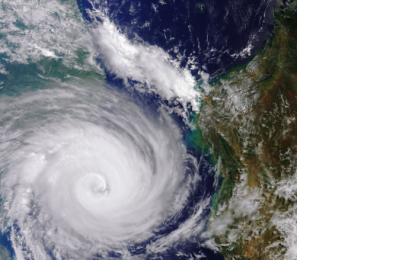From November 2021 to January 2022, the Tony Blair Institute for Global Change published a series of publications in the field of technology policy related to disaster management. The series is called “A Roadmap for Managing Disasters” and consists of four parts, each aiming at different aspects of the usage of technologies for disaster management. Earth observation and the use of space-based technologies play a crucial role, as outlined in the foreword by Mr. Andrew Zolli, Chief Impact Officer at Planet:
“One scarcely needs to be a scientist to understand that our time is one of existential, linked, planetary-scale emergencies. Humanity’s unsustainable consumption and exploitation of the Earth’s resources is pushing many of the systems on which all life depends – including our own – perilously close to breaking point.
The evidence is all around us. We have less than a decade to avoid locking in the worst effects of climate change – the very same decade in which another billion people are due to swell humanity’s ranks.
But while the 21st century has brought with it seemingly unsurmountable challenges, it has also equipped us with unprecedented tools and resources to address them head-on. Our challenge is to align the tools to these challenges, as quickly as possible.
To ensure our progress, we’re also going to need a monitoring system that can show us this progress – or lack thereof – in real time.
Here, many technologies – but especially a new generation of Earth-observing satellites – can play an important part. These satellites now capture change on the entire Earth every day, in high resolution, providing an independent source of truth and transparency that enables new modes of action and accountability. When analysed using the tools of artificial intelligence, the data these satellites produce can illuminate climate, conservation, and humanitarian risks and realities as never before, and inform a new generation of sustainable-management practices, innovative policy mechanisms and financial instruments to address them. The result should be more agile and anticipatory policies, designed to blunt the impacts of the sharpest shocks and disruptions, particularly for the most vulnerable of our fellow citizens. […]”
Read the full publications of “A Roadmap for Managing Disasters” here:
Part 1: How Climate-Vulnerable Countries Can Leverage Tech
Part 2: How Climate-Vulnerable Countries Can Use Tech
Part 3: How Climate-Vulnerable Countries Can Access Tech
Part 4: How Climate-Vulnerable Countries Can Finance Tech
Image: Cyclone Idai west of Madagascar. Captured by Sentinel-3 mission, 13 Marc 2019. Image Credit: ESA, contains modified Copernicus Sentinel data (2019), processed by ESA. https://www.esa.int/ESA_Multimedia/Images/2019/03/Cyclone_Idai_west_of_Madagascar

